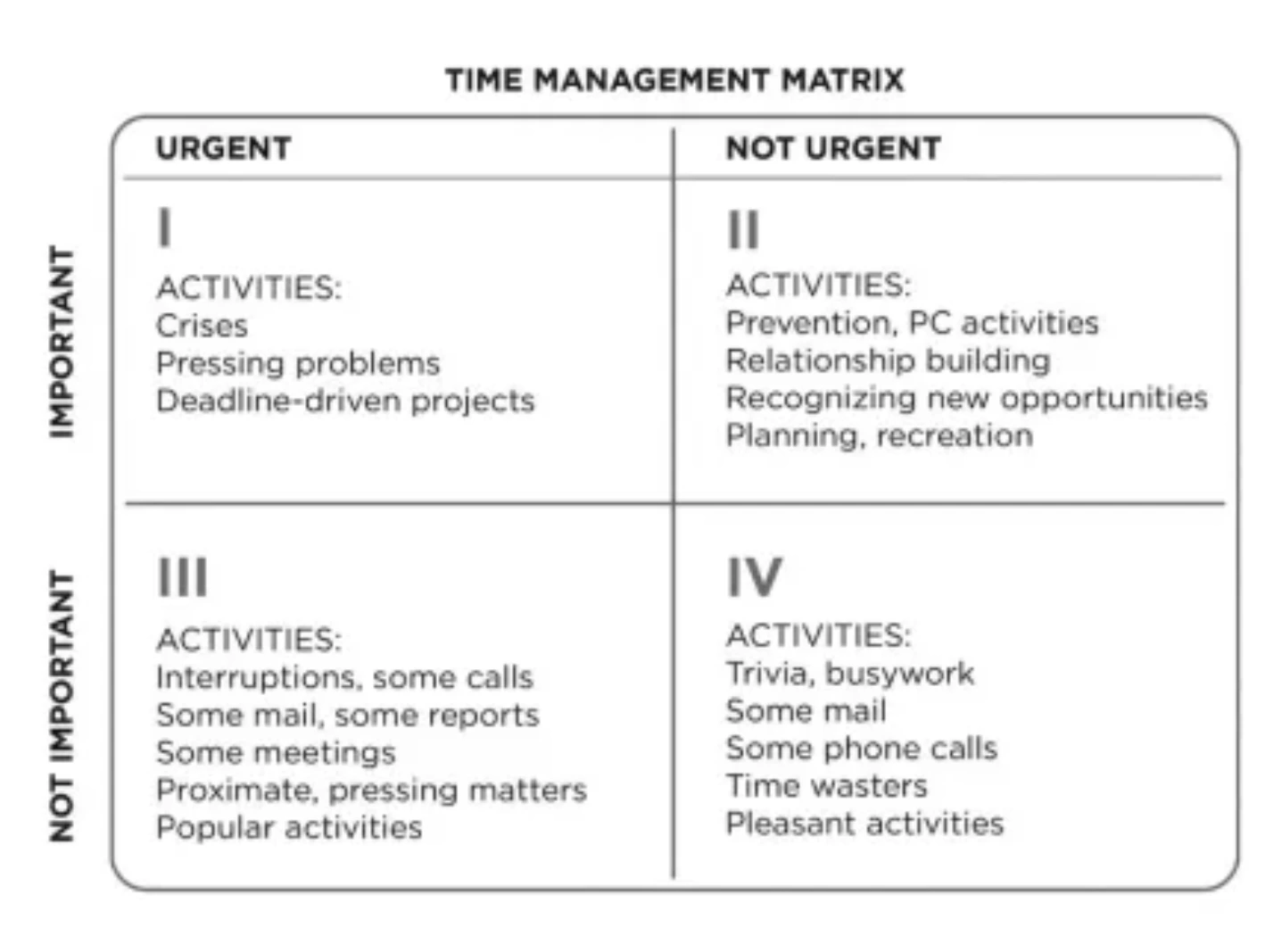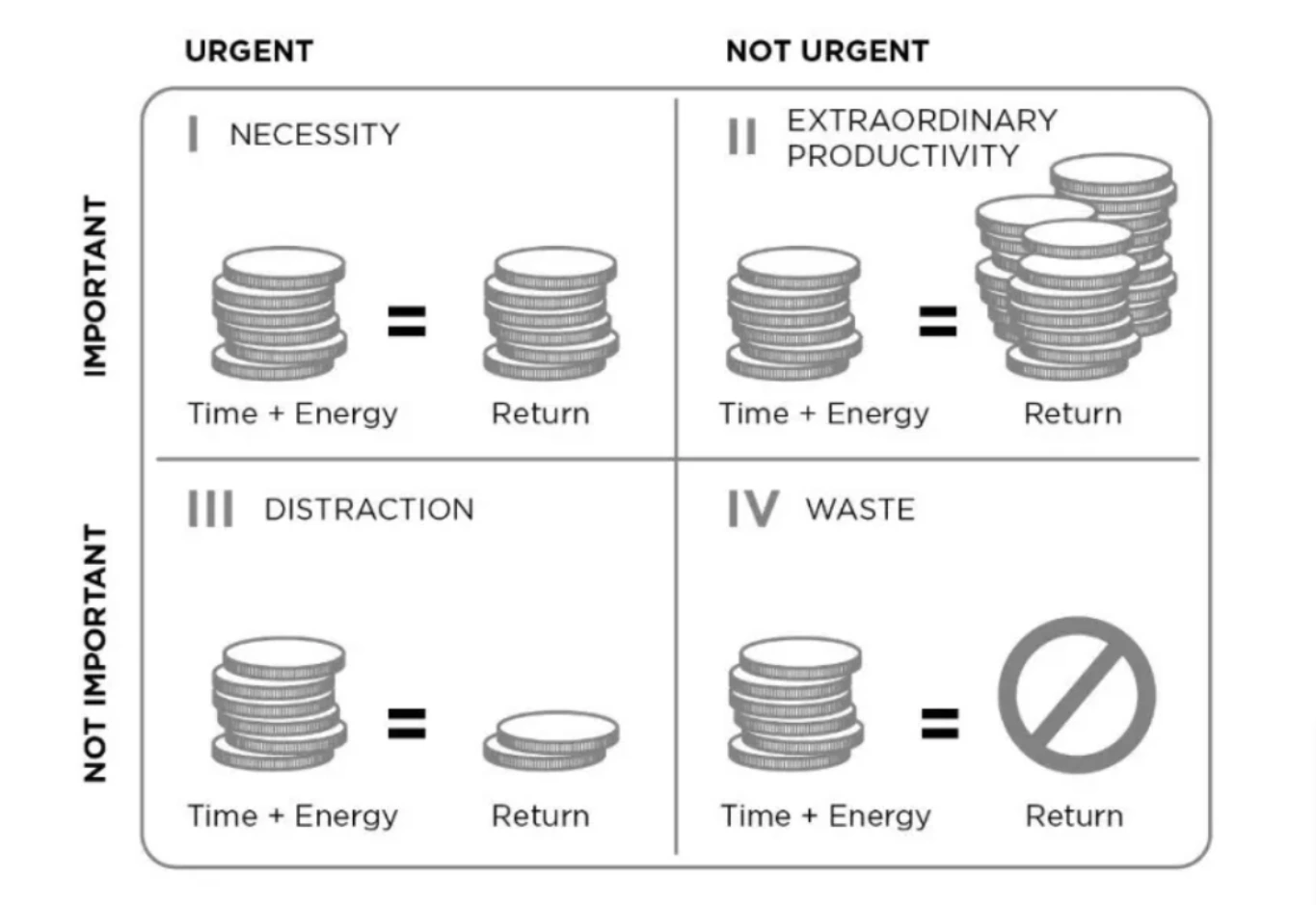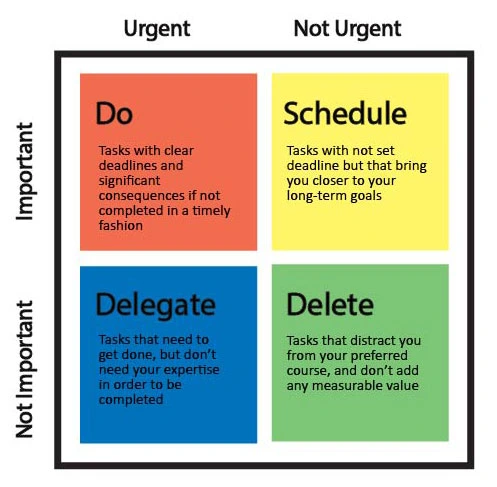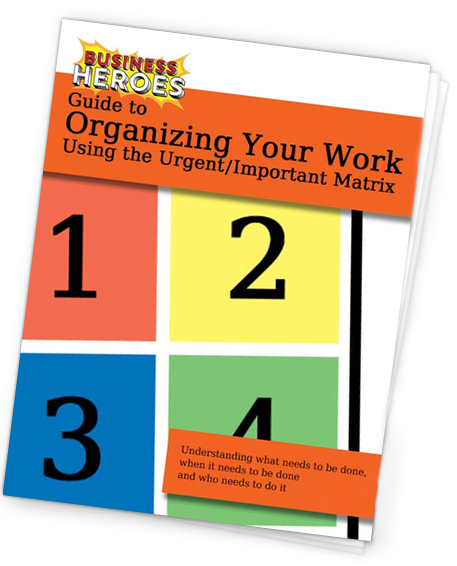Understanding what needs to be done, when it needs to be done and who needs to do it.
This way of thinking has evolved in modern times. A milestone in this approach is found in the 1954 speech by then U.S. President Dwight D. Eisenhower. He was actually quoting Dr J. Roscoe Miller, president of North western University, who said:
“I have two kinds of problems: the urgent and the important.
The urgent are not important, and the important are nver urgent.”
 This became known as the Eisenhower Principle. There was lots going on in the country and the world. During Eisenhower’s time in office, he launched programs that directly led to the development of the Interstate Highway System in the United States, the launch of the internet (DARPA), the exploration of space (NASA), and the peaceful use of alternative energy sources (Atomic Energy Act).
This became known as the Eisenhower Principle. There was lots going on in the country and the world. During Eisenhower’s time in office, he launched programs that directly led to the development of the Interstate Highway System in the United States, the launch of the internet (DARPA), the exploration of space (NASA), and the peaceful use of alternative energy sources (Atomic Energy Act).
Eisenhower spoke of ‘Urgent vs. Important’ as a binary choice. Urgent but not important and Important but not urgent.
Our thinking about this principle evolved overtime.
In our current business world sometimes Urgent is Important. In fact, we recognize at least 4 different ways to categorize tasks Urgent, Not Urgent, Important, Not Important..
Others (notably Stephen Covey) extended the ideas and added a useful way to visualize all tasks in the matrix. Covey popularized the matrix of all tasks organized into one of 4 quadrants based on Urgent v. Important while adding in ‘NotUrgent’ and ‘Not Important’. This adds the notion of the quality of activities and achieving results into th eview of tasks.
Covey begins with a matrix like this in ‘The Seven Habits of Highly Effective People’ :

This approach adds aqualitative element to looking at what we need to do and how we spend our time. So Urgent tasks can either be Important and Not Important. Likewise, Important tasks can be either urgent or not urgent.This makes it much easier to determine where to focus our attention.
Clearly attention needs to be paid to quadrants I and II. If it is important and urgent we have to deal with it. If it is important and not urgent there is a problem. Intellectually we know it is important. The psychological dissonance is that it is easier to ‘let slide’ the important activities that don’t have a deadline (urgency) attached to them.
It is also psychically easy to let all of the ‘not important’ activities inquadrants III and IV slide. The problem is how to actually do that in real life. Urgent, not important needs to be dealt with somehow. But How?

So, What Does This Mean to You and Running Your Business?
You need to decide where tasks fit into the matrix. Once you do that, it becomes easier to decide what to do next. One trap to ignore is often termed ‘The Urgency Trap’. We get hit more and more with urgent requests. Treating all urgent issues/requests the same will take you off track. This is damaging in 2 key ways.
First you get worn out spending your time on urgent but not important tasks that have very little reward. Second, you get distracted from the important (but not urgent) issues that require your thoughtful attention.

Here is a helpful summary:
Urgent and Important — You need to get these done
Not Urgent and Important — You need to figure out how the make these a priority. Don’t fall into the trap of ignoring important issues just because they are not urgent in the moment
Urgent and Not important — You need to figure out how to get these done as efficiently as possible. As much as possible, have systems to get help. If you have employees, get them involved. Some things can be handled by virtual assistants or even automation.
Not Urgent and Not Important — Remove these from your life and your agendas
So, How Do You Get Started Fixing This?

As the leader of your business, you have significant responsibility. If you are looking at your own list, it is interesting to consider ‘Urgent to whom?’ Boss, partner, client, banker, supplier, mentor?



